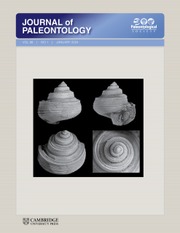Article contents
Lingulate brachiopods from the Lampazar Formation (late Cambrian) of the Cordillera Oriental of northwestern Argentina
Published online by Cambridge University Press: 28 December 2015
Abstract
The Angosto de Lampazar, a classic locality for the study of lower Paleozoic successions in the Cordillera Oriental, NW Argentina, has yielded a late Cambrian relatively diverse, lingulate brachiopod fauna. Sandy lenses with calcareous cement from the uppermost levels of the Lampazar Formation have yielded abundant remains of articulate and phosphatic brachiopods. Among the latter, the new species Eurytreta harringtoni Mergl and Herrera, Lingulella? melonica Mergl and Herrera, Libecoviella lenticularis Mergl and Herrera, and Schizambon cardonalis Mergl and Herrera, as well as the new genus and species Saltaia lampazarensis Mergl and Herrera are formally introduced. Trilobites and conodonts from the same horizons characterize the Cordylodus proavus Zone, allowing a correlation with Stage 10 of the Furongian Series. Although the information on lingulate brachiopods from the C. proavus Zone is scarce across the world, the composition of the studied association displays a relationship with coeval and slightly younger faunas of Utah and Kazakhstan. The Argentine brachiopods, the first described from the late Cambrian Proto-Andean margin of Gondwana, are more closely related to temperate Laurentian faunas than to those from the high latitude North African margin of Gondwana.
- Type
- Articles
- Information
- Copyright
- Copyright © 2015, The Paleontological Society
References
- 7
- Cited by


